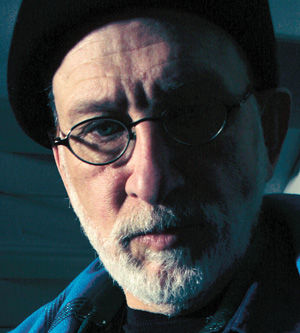Conversing with our ancestors
Published November 30, 2016
These are the generations of Isaac.
Isaac entreats God, and God is entreated. Same verb, different structure. It is one of the words we encounter in Torah that is considered prayer.
The same root, transitive and reflexive. Isaac entreats God, and God is entreated. We cannot actually translate that into English using a more prayerful word: Isaac prayed to God, and God was prayed, en-prayed.
In this sense of prayer, Isaac is requesting something of God, and God, it seems, allows it. The English still doesn’t work well.
Rashi reminds us that the root for “entreated” is a root of abundance. Isaac lifted up abundant prayers, and so did his wife. It seems that the abundance of the prayers here were effective, God was entreated, so to speak, and Rebecca became pregnant.
The pregnancy was rough, the kids were struggling within her, and we have her quoted: if so … why … this … me …
It doesn’t seem to be a sentence, just a cry. A wail.
She goes to inquire / lidrosh of Hashem. This is the center of the story. She goes to lidrosh, the first instance of this pivotal word in the Hebrew bible, the word which gives us midrash — an explication of text. An explanation. A comment from the white fire (the text is all fire all over, black fire we read, white fire we interpret).
Is this a prayer? It doesn’t seem so. What is she doing, by lidrosh-ing?
Rashi says she is going to the beit midrash — the study hall — quoting the Aramaic translation called Targum Yonatan. She goes to the study center, she enters the circle where we are studying, for that is where we all are, all the time, we are in the beit midrash. We are poised over the texts of our lives.
It’s as if Rebecca steps out of the story, a door opens and she exits the story to enter the conversation of her students. We are her students. Everything that happened to her, happens to us. She comes to the beit midrash, where we are all sitting with our texts.
We are, all of us, in dialogue with our ancestors all the time. We’ve been waiting for you, we say.
What is she asking for? The same things we are asking. She is asking for some significance to her life. Im zeh lamah zeh anokhi; if this, why … this … me … What does it mean?
First, expand my “me” — make it bigger, and that is what she gets. Two nations are struggling within her, she gets what she asks for, a larger me.
She also gets a context for her suffering. She gets an explanation. And she gets it in the beit midrash, which has taken on an oracular, prophetic quality.
She comes and joins our circle. Our circle is oracular and redemptive. Why? Because it teaches meaning. She comes to us, we’re sitting around the table in the beit midrash of our lives and we all respond the same way to her cry:
We need meaning, we say, it completes us.















